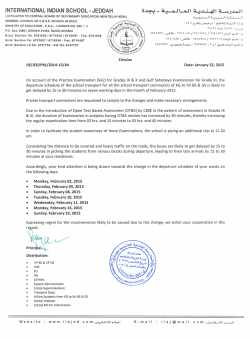
Assignment 4
Assignment 4 You are the owner of a big store. The shop has k billing counters. Since your store is the only one in locality, you get a lot of customers leading to long queues while billing. You would like to know some statistics like average waiting time, average queue length etc., so that proper steps to improve customer convenience can be taken. You want to do this by running a simulation, as it is cost/time efficient and allows for a range of experimentaion on the assumed model. Assume that customer-biller interaction (ie. service time) is a random variable, distributed normally and service times of different customers are independent of each other. Also assume that customers arrive independent of each other and at a fixed rate (λ per unit time). You may read more about it here: http://services.byu.edu/t/quant/que.html. A new customer always joins the queue with smallest length at that time. The simulation has to be driven by events. An event is an arrival/departure of a customer. For each customer, you have to keep track of their arrival/departure time. You will have to maintain a global clock and two data structures to do this: 1. A heap H1 of size k, where each node will contain the current no. of customers in the queue and the time when the services of its current customers will be finished. The heap will be ordered by the no. of customers (smallest on top). 2. A heap H2 of size equal to the no. of current customers. A node of this heap will contain the customer’s queue no., arrival time and departure time. The heap will be ordered by the departure time (smallest on top). You may want to generate the arrival time of a large number of customers beforehand and maintain a variable which contains the time of next event. Using this variable, you will be able to set the clock to next event. Whenever a new customer arrives, generate a service time according to the assumed distribution. Use H1 ( and update it as well) to generate a node containing the queue no., arrival time, departure time and insert it in H2 . Whenever a departure occurs, delete the corresponding node from H2 and update H1 . You can use global variables for maintaining any statistics. Your program should prompt the user to enter the arrival rate (R), number of billing counters(k), mean and variance of the service time (µ, σ) and the number of customers for which the simulation has to be run (N ). You have to output the average waiting time. 1
© Copyright 2025





















